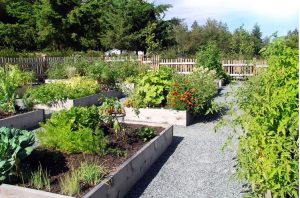The Benefits of Companion Planting in Home Gardens

Companion planting is a gardening technique that involves planting different plants together based on their mutually beneficial relationships. This practice has been used for centuries and has several benefits for home gardeners. By strategically placing plants that support each other, gardeners can enhance the health and productivity of their garden while reducing the need for chemical pesticides and fertilizers.

Improved Pest Control
One of the key benefits of companion planting is natural pest control. Certain plants, when grown together, can repel or deter pests, reducing the need for chemical interventions. For example, marigolds are known to repel aphids, nematodes, and other harmful insects when planted near vegetables like tomatoes or cucumbers. Similarly, planting basil alongside tomatoes can help repel pests like flies and mosquitoes. By using companion planting techniques, gardeners can protect their crops without relying on harmful chemicals.
Enhanced Nutrient Uptake
Companion planting also improves nutrient uptake in plants. Some plants have deep root systems that can access nutrients deep within the soil, while others have shallow roots that primarily access surface-level nutrients. When these plants are grown together, their root systems can complement each other, creating a more efficient nutrient uptake system. For example, planting nitrogen-fixing legumes like beans or peas alongside nitrogen-hungry plants like corn or cabbage can help enrich the soil by naturally increasing nitrogen levels.
Weed Suppression
Companion planting can also help suppress weeds in home gardens. By planting ground cover plants like clover or thyme between rows of crops, gardeners can limit weed growth by shading the soil and reducing weed germination. Additionally, some plants, such as sunflowers or zinnias, can attract beneficial insects that feed on weed seeds or pests, further reducing weed populations. This natural weed suppression technique not only saves time and effort but also helps maintain a clean and tidy garden.
Improved Pollination
Companion planting can enhance the pollination process in home gardens. Some plants, such as certain herbs and flowers, attract pollinators like bees and butterflies. By planting these flowers near crops that require pollination, gardeners can increase the chances of successful pollination and improve overall yield. For example, planting lavender or borage near fruit trees can attract bees, ensuring proper pollination and maximizing fruit production.
Biodiversity and Aesthetics
Companion planting promotes biodiversity in the garden, creating a more resilient and balanced ecosystem. By planting a variety of flowers, herbs, and vegetables, gardeners can attract a diverse range of beneficial insects and birds that help control pests and pollinate plants. Additionally, companion planting can enhance the aesthetics of the garden by combining plants with different colors, textures, and heights, creating visually appealing and harmonious arrangements.
In conclusion, companion planting offers numerous benefits for home gardeners. From natural pest control to improved nutrient uptake, weed suppression, enhanced pollination, and increased biodiversity, this gardening technique is a sustainable and effective way to maximize the health and productivity of your garden. By harnessing the power of plant relationships, you can create a thriving and beautiful garden that is both environmentally friendly and visually stunning.







